 W
WThe Inner German border was the border between the German Democratic Republic and the Federal Republic of Germany from 1949 to 1990. Not including the similar and physically separate Berlin Wall, the border was 1,393 kilometres (866 mi) long and ran from the Baltic Sea to Czechoslovakia.
 W
WThe 1953 Avro Lincoln shootdown incident was the shooting down of a British Avro Lincoln four-engined bomber which had intruded into East German airspace during a training mission on 12 March 1953. While the aircraft was flying on the Hamburg-Berlin air corridor over East Germany it was shot down by a MiG 15 Soviet fighter.
 W
WA B Tower was a type of watchtower used by the East German Border Guards.
 W
WThe Berlin Air Safety Centre (BASC) was established by the Allied Control Authority Coordinating Committee on 12 December 1945. Operations began in February 1946 under quadripartite flight rules Paragraph 4. Paragraph 4 of the rules begins: "The Berlin Air Safety Centre has been established in the Allied Control Authority Building with the object of ensuring safety of flights for all aircraft in the Berlin area. BASC regulates all flying in the Berlin control zone and also in the corridors extending from Berlin to the boundaries of adjacent control zones."
 W
WThe Berlin border crossings were border crossings created as a result of the post-World War II division of Germany. Prior to the construction of the Berlin Wall in 1961, travel between the Eastern and Western sectors of Berlin was completely uncontrolled, although restrictions were increasingly introduced by the Soviet and East German authorities at major crossings between the sectors. This free access, especially after the closure of the Inner German border, allowed the Eastern Bloc emigration and defection to occur. East German officials, humiliated by this mass defection, subsequently chose to erect the Berlin Wall in order to prevent residents from leaving East Germany.
 W
WThe Berlin Crisis of 1961 occurred between 4 June – 9 November 1961, and was the last major politic-military European incident of the Cold War about the occupational status of the German capital city, Berlin, and of post–World War II Germany. The Berlin Crisis started when the USSR launched an ultimatum demanding the withdrawal of all armed forces from Berlin, including the Western armed forces in West Berlin. The crisis culminated in the city's de facto partition with the East German erection of the Berlin Wall.
 W
WThe Berlin Wall was a guarded concrete barrier that physically and ideologically divided Berlin from 1961 to 1989. Construction of the wall was commenced by the German Democratic Republic on 13 August 1961. The Wall cut off West Berlin from surrounding East Germany, including East Berlin. The barrier included guard towers placed along large concrete walls, accompanied by a wide area that contained anti-vehicle trenches, beds of nails, and other defenses. The Eastern Bloc portrayed the Wall as protecting its population from fascist elements conspiring to prevent the "will of the people" from building a socialist state in East Germany.
 W
WBillmuthausen was a village in Germany, founded in 1340. It was destroyed by East German authorities in 1978 as it stood too close to the Inner German border, the border between the post-war states of East and West Germany. It lay in the extreme south of Thuringia in the Heldburger Land in the district of Hildburghausen, only five hundred metres away from the Thuringian-Bavarian border. In January 1965, the authorities destroyed the small village church. In September 1978, the last family left the village, after which all the buildings in the village were demolished and the land leveled.
 W
WThe Border Troops of the German Democratic Republic was the border guard of the German Democratic Republic (GDR) from 1946 to 1990.
 W
WBöseckendorf is a village in the Teistungen municipality in the district of Eichsfeld in Germany. It became famous during the Cold War for two mass escapes in 1961 and 1963 involving a total of 65 inhabitants – a quarter of the village's population – across the heavily fortified inner German border.
 W
WThe British Frontier Service was a British government organisation that was responsible for border monitoring duties in West Germany between 1946 and 1991. Its personnel served on Germany's international borders with Denmark, the Netherlands and Belgium before focusing on the inner German border. It was charged with a number of tasks, including assisting the movements of British military personnel and their dependents, monitoring the border regions and helping to defuse border incidents. It was ultimately disbanded following German reunification.
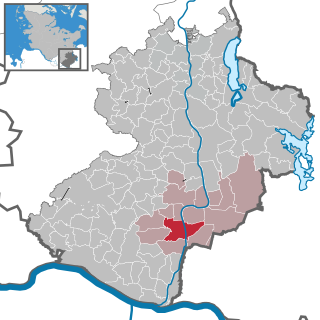 W
WBüchen is a municipality in the district of Lauenburg, in Schleswig-Holstein, Germany. It is seat of the Amt Büchen.
 W
WBundesgrenzschutz is the former name of the Bundespolizei of Germany. Established on 16 March 1951 as a subordinate agency of the Federal Ministry of the Interior, the BGS originally was primarily focused on protecting the West German borders. During the first years BGS units had military structures, training and equipment. The law enforcement officers legally had military combatant status until 1994. A major part of the early BGS personnel joined the newly founded German Armed Forces (Bundeswehr) in 1956 and thus significantly contributed to West Germany's rearmament. The BGS was renamed to Bundespolizei on 1 July 2005. The change of name did not have any effect on the legal status or competencies of the agency, but rather reflects its transition to a multi-faceted police agency with control over border, railway and air security.
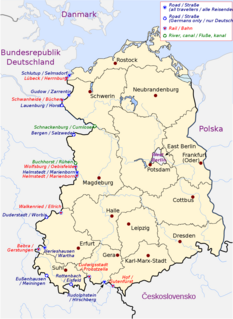 W
WCrossing the inner German border remained possible throughout the Cold War; it was never entirely sealed in the fashion of the border between the two Koreas, though there were severe restrictions on the movement of East German citizens. The post-war agreements on the governance of Berlin specified that the Western Allies were to have access to the city via defined air, road, rail and river links. This was mostly respected by the Soviets and East Germans, albeit with periodic interruptions and harassment of travellers. Even during the Berlin Blockade of 1948, supplies could be brought in by air – the famous Berlin Airlift – and Allied military convoys could pass through East Germany en route to Berlin.
 W
WThe Elbe is one of the major rivers of Central Europe. It rises in the Krkonoše Mountains of the northern Czech Republic before traversing much of Bohemia, then Germany and flowing into the North Sea at Cuxhaven, 110 km (68 mi) northwest of Hamburg. Its total length is 1,094 kilometres (680 mi).
 W
WErlebach was a village in Germany, founded in 1310 A D. It was destroyed by the East German authorities in 1986 as it stood too close to the Inner German border, the border between the post-war states of East and West Germany. It lay in the extreme south of Thuringia in the district of Hildburghausen, only a few hundred metres away from the Thuringian-Bavarian border.
 W
WThe 1961 F-84 Thunderstreak incident, occurring on 14 September 1961, was an incident during the Cold War, in which two Republic F-84F Thunderstreak fighter-bombers of JaBoG 32 of the German Air Force (Luftwaffe) crossed into East German airspace because of a navigational error, before landing at Berlin Tegel Airport. The two planes successfully evaded a large number of Soviet fighter planes by finding cover in a heavy layer of clouds, but also by the actions of an airman at the United States Air Force air route traffic control center at Berlin Tempelhof Airport who ordered the planes on to Berlin rather than forcing them to turn around and face the pursuing fighter planes. The event came at a historically difficult time in relations between the two Germanies. Only a month before, the Berlin Wall had been built, which completely cut off West Berlin from surrounding East Germany and from East Berlin. It also came three days before the West German federal election, held on 17 September 1961.
 W
WThe inner German border rapidly and unexpectedly fell in November 1989, along with the fall of the Berlin Wall. The event paved the way for the ultimate reunification of Germany just short of a year later.
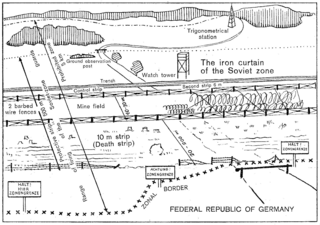 W
WThe fortifications of the inner German border comprised a complex system of interlocking fortifications and security zones 1,381 kilometres (858 mi) long and several kilometres deep, running from the Baltic Sea to Czechoslovakia. The outer fences and walls were the most familiar and visible aspect of the system for Western visitors to the border zone, but they were merely the final obstacle for a would-be escapee from East Germany. The complexity of the border system increased steadily until it reached its full extent in the early 1980s. The following description and the accompanying diagram describe the border as it was around 1980.
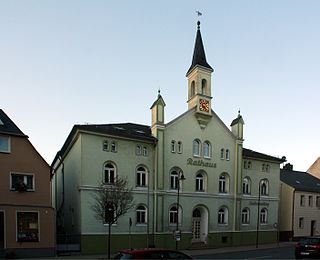 W
WGefell is a town in the Saale-Orla-Kreis district, in Thuringia, Germany.
 W
WGerstungen is a municipality in the Wartburgkreis district of Thuringia, Germany. In July 2018 the former municipalities of Marksuhl and Wolfsburg-Unkeroda were merged into Gerstungen.
 W
WGrepo is the short form of the German word for border police. It is usually found in English referring to the Grenztruppen der DDR who guarded the inner German border and the Berlin Wall, but can be used to refer to other border police, such as the former Bayerische Grenzpolizei, Hessen Grenzpolizei, and the separate Bundesgrenzschutz
 W
WHeinz-Josef Große was a 34-year-old East German (GDR) construction worker who was shot and killed on 29 March 1982 by GDR border guards on the Inner German border at Schifflersgrund, near Bad Sooden-Allendorf.
 W
WGudow is a municipality in the district of Lauenburg, in Schleswig-Holstein, Germany.
 W
WThe Border checkpoint Helmstedt–Marienborn, named Grenzübergangsstelle Marienborn (GÜSt) by the German Democratic Republic (GDR), was the largest and most important border crossing on the Inner German border during the division of Germany. Due to its geographical location, allowing for the shortest land route between West Germany and West Berlin, most transit traffic to and from West Berlin used the Helmstedt-Marienborn crossing. Most travel routes from West Germany to East Germany and Poland also used this crossing. The border crossing existed from 1945 to 1990 and was situated near the East German village of Marienborn at the edge of the Lappwald. The crossing interrupted the Bundesautobahn 2 (A 2) between the junctions Helmstedt-Ost and Ostingersleben.
 W
WHerleshausen is a community in the Werra-Meißner-Kreis in Hesse, Germany.
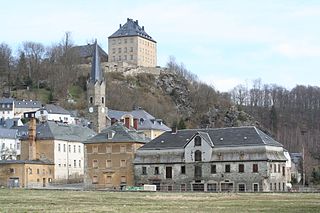 W
WHirschberg is a town in the Saale-Orla-Kreis district, in Thuringia, Germany. It is situated on the river Saale, 20 km south of Schleiz, 12 km northwest of Hof (Bavaria), and 25 km southwest of Plauen (Saxony).
 W
WLauenburg, or Lauenburg an der Elbe (Lauenburg/Elbe), is a town in the state of Schleswig-Holstein, Germany. It is situated on the northern bank of the river Elbe, east of Hamburg. It is the southernmost town of Schleswig-Holstein and belongs to the Kreis (district) of Herzogtum Lauenburg. Lauenburg had a recorded population on 31 December 2013 of 11,253.
 W
WKurt Lichtenstein was a communist journalist, and his death was a notable result of the German Democratic Republic's border control policies.
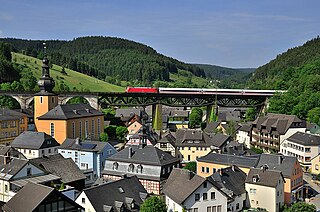 W
WLudwigsstadt is a town in the district of Kronach, in the Upper Franconian region of Bavaria, Germany.
 W
WMödlareuth is a German village situated partly in Bavaria and partly in Thuringia. Between 1949 and 1990, the northern part was in East Germany and the southern part in West Germany. The Thuringian part of the village belongs to Gefell while the Bavarian part belongs to Töpen. It was called "Little Berlin" by the Americans because a wall divided it until 1989, like the Berlin Wall divided Berlin. "Little Berlin" became a symbol of separation between the West and East by the wall, but also a symbol of reunification. Today the Museum Mödlareuth shows the history of the village and gives information about the political system at that time.
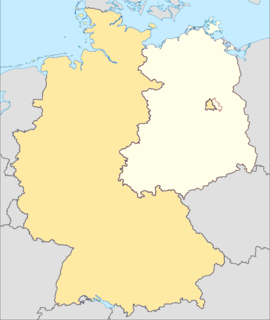 W
WNumerous museums of the inner German border are located along the course of the former border between East and West Germany, documenting its story and in some places preserving original elements of the border fortifications.
 W
WObservation Post Alpha, OP Alpha, or Point Alpha was a Cold War observation post between Rasdorf, Hesse, in what was then West Germany and Geisa, Thuringia, then part of East Germany. The post overlooked part of the "Fulda Gap", which would have been a prime invasion route for Warsaw Pact forces had the Cold War erupted into actual warfare. It was abandoned by the military in 1991. Today, the "Point Alpha" memorial commemorates the Observation Point's four decades of existence. The memorial is dedicated to keeping it and a nearby section of the inner German border as reminders of the division of Germany and the confrontation between NATO and Warsaw Pact in the Cold War.
 W
WOebisfelde is a town and a former municipality in the Börde district in Saxony-Anhalt, Germany. Since 1 January 2010, it is part of the town Oebisfelde-Weferlingen. It is accessed by Bundesstraße 188.
 W
WProbstzella is a municipality in the district Saalfeld-Rudolstadt, in Thuringia, Germany.
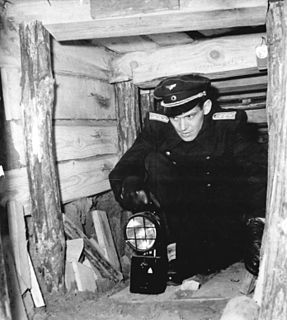 W
WRepublikflucht was the official term in the German Democratic Republic for illegal emigration to West Germany, West Berlin, and non-Warsaw Pact countries. Republikflucht applied to both the millions of Germans who migrated legally from the Soviet occupation zone and East Germany before the Berlin Wall was built on 13 August 1961, and the thousands who migrated illegally across the Iron Curtain until 23 December 1989.
 W
WRühen is a municipality in the district of Gifhorn, in Lower Saxony, Germany. The Municipality Rühen includes the villages of Brechtorf, Eischott and Rühen.
 W
WSchwanheide is a municipality in the Ludwigslust-Parchim district, in Mecklenburg-Vorpommern, Germany.
 W
WThe SM-70 is an East German directional antipersonnel mine developed specifically to combat Republikflucht (defection) across the Inner German Border (Grenze) into West Germany.
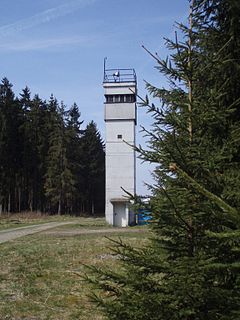 W
WThe Sorge Border Museum is an open-air museum that is open to the public and free of charge near Sorge in the Harz Mountains of central Germany. It is located immediately by the former Inner German Border, southeast of Braunlage and aims to recall the division of Germany into East and West Germany.
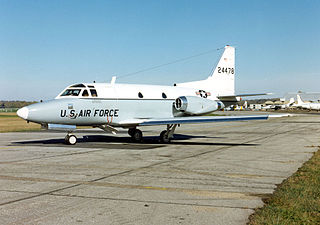 W
WOn 28 January 1964, an unarmed T-39 Sabreliner aircraft of the United States Air Force was shot down while on a training mission over Erfurt, East Germany, by a MiG-19 jet fighter of the Soviet Air Force. The occupants of the aircraft were Lieutenant Colonel Gerald K. Hannaford, Captain Donald Grant Millard and Captain John F. Lorraine. All three died, becoming direct casualties of the Cold War in Europe.
 W
WTöpen is a municipality in Upper Franconia in the district of Hof in Bavaria in Germany.
 W
WVacha is a town in the Wartburgkreis district, in Thuringia, Germany. It is situated on the river Werra, 15 km west of Bad Salzungen, and 23 km east of Bad Hersfeld.
 W
WWartha is a town in the subdivision of Wartha-Göringen which forms part of the independent-city district of Eisenach in Thuringia state, Germany.
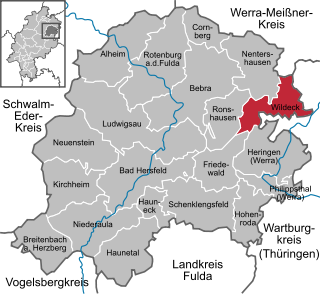 W
WWildeck is a community in Hersfeld-Rotenburg district in northeastern Hesse, Germany lying right at the boundary with Thuringia, 54 km southeast of Kassel.
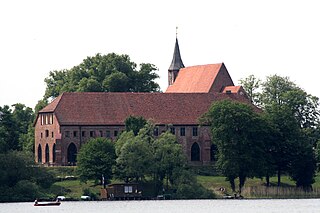 W
WZarrentin am Schaalsee, until 2004 simply Zarrentin, is a town in the Ludwigslust-Parchim district, in Mecklenburg-Western Pomerania, Germany. It is situated on the Schaalsee lake, 19 km southeast of Ratzeburg, and 34 km west of Schwerin.